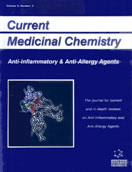Abstract
Coronary artery disease (CAD) is still the leading cause of death in men and women, despite our better understanding of the disease process. Atherosclerosis, the underlying pathological process that leads to CAD, was considered a disorder of lipid metabolism and deposition of lipid material in the vessel wall. Today however, it is viewed as an inflammatory disease and it is evident that inflammation is involved in every step of plaque formation, progression and rupture. At the cellular level, recent studies on human and animal models illustrated the involvement of nuclear transcription factors in early lesion formation and lesion progression. Nuclear factor Kappa-B (NF-kB) activation can result in a proinflammatory, atherogenic process while peroxisome proliferator-activated receptors (PPARs) and their ligands have an atheroprotective, anti-inflammatory effect. Many drugs and compounds have been shown to block NF-kB or reduce its effects while others activate PPARs and slow or halt the inflammatory process. In this review, we will discuss the contribution of NF-kB and PPARs to the different inflammatory pathways that contribute to atherosclerosis. We will also discuss the effect on the inflammatory pathways by different therapeutic options like the angiotensin converting enzyme (ACE) inhibitors and the angiotensin receptor blockers (ARBs), insulin and insulin sensitizers, statins and fibrates, aspirin and salicylates, and antibacterial and antiviral therapy.
Keywords: atherosclerosis, inflammation, ppar
 2
2

